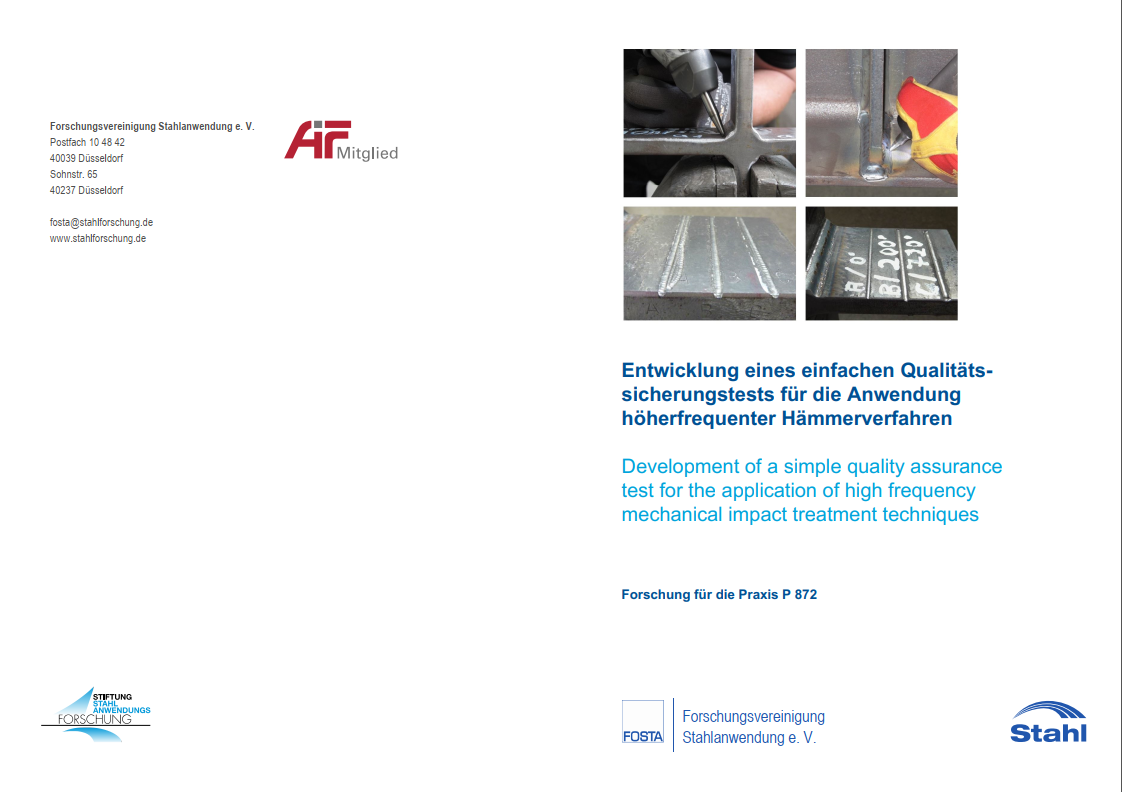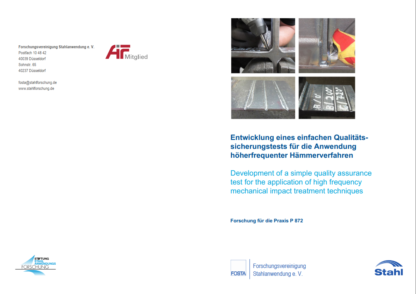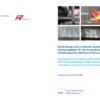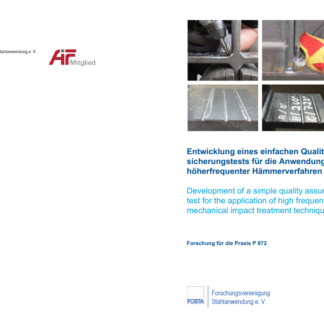Description
P 872 – Development of a simple quality assurance test for the application on high frequency mechanical impact treatment techniques
The effect of increased fatigue strength by application of high frequency mechanical impact treatments (HFMI) could be verified on several types of welded joints, which are appropriate for this kind of post-weld treatment. In addition to accepted guidelines for the fatigue design of treated welds, the qualification of users as well as the qualification and quality assurance of the equipment is necessary for a reliable application of these techniques. Therefore, generally three methods are generally considered. In this study and in a parallel running DASt research project, specimens have been used to verify the efficiency and feasibility:
- According to the Almen Test known from shot peening, a test strip for high frequency mechanical impact treatment was developed. Based on the deflection of this test strip, the intensity of a post-weld treatment could be checked.
- Based on a comparison of 3D-laser-measurements before and after a post-weld treatment, the depth of indentation can be determined. The depth of indentation is a relevant parameter for the estimation of the quality of a treatment.
- Investigations of hardness measurements on treated and untreated welds have shown differences in the hardness values. A possibility has been investigated to evaluate the quality of a treatment based on measured hardness values.
The objective of this study was to develop simple and practice-friendly procedures for quality assurance tests, which may also be applied on site. Based on these procedures the process reliability of the high frequency mechanical impact treatment techniques can be ensured.
As a result, a combination consisting of a simple visual inspection of the post-treatment track on the structure and a random sample with defined hardness testing effort is proposed for the quality assurance of the higher-frequency hammering methods. Within the scope of the visual inspection, appropriate gauges must then be used to measure and document the indentation depths. Further residual stress measurements could, if necessary, contribute to the verification of permissible hardness values and provide information about the residual compressive stresses introduced as a result of varying intensities.
Main content only available in german language.
Published in:
March 2020
Authors:
Prof. Dr.-Ing. T. Ummenhofer, Dipl.-Ing. P. Weidner, Prof. Dr.-Ing. U. Kuhlmann, Dr.-Ing. K. Kudla, SFI, Dipl.-Ing. St.Breunig




